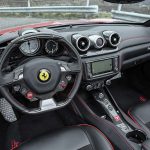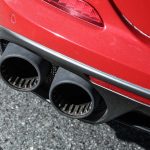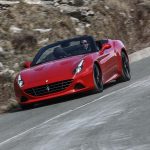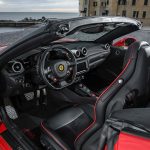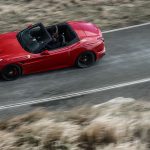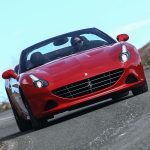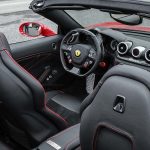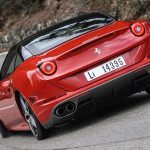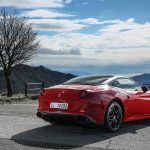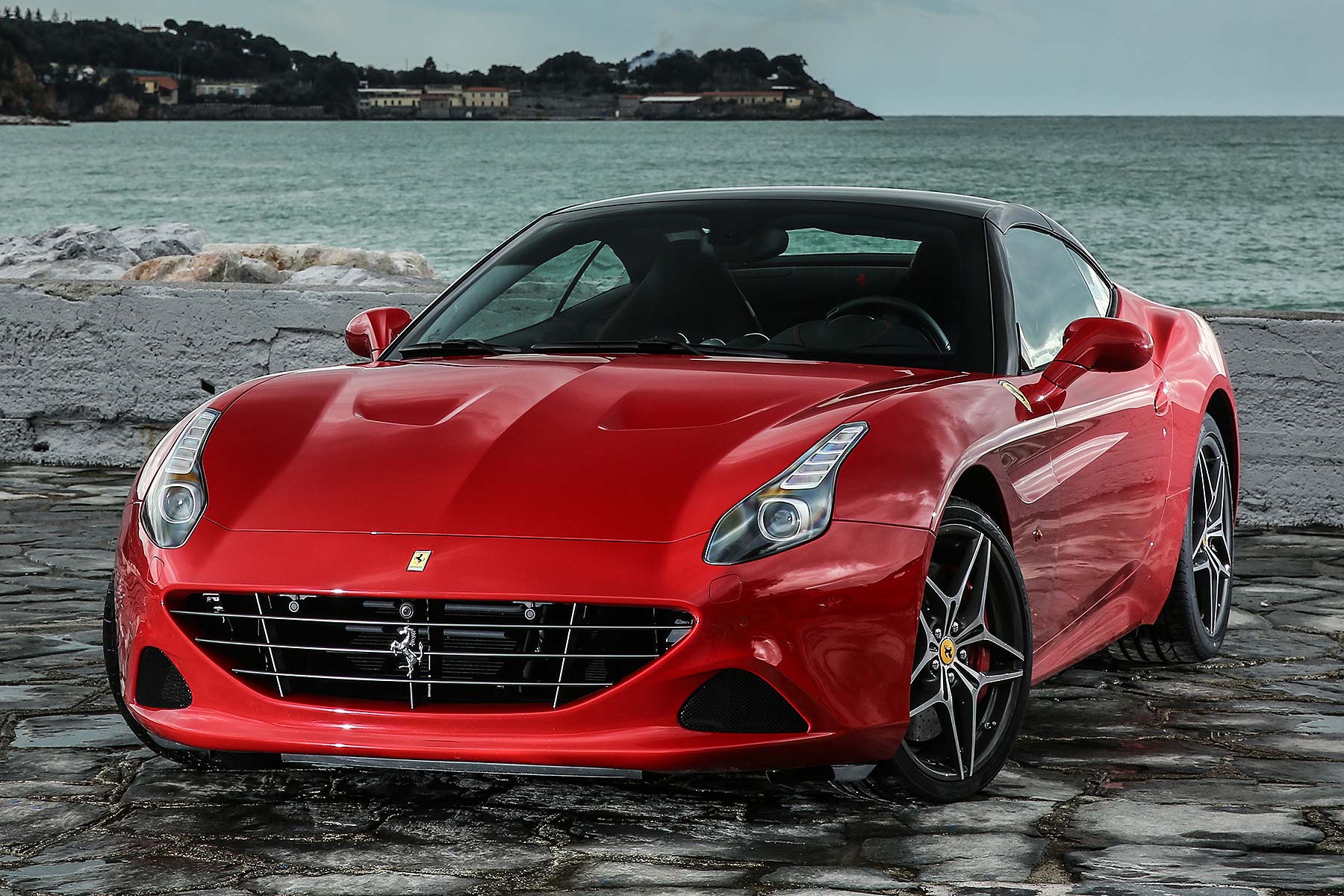 Firstly, a confession. I’ve never driven a Ferrari before. As a child, the Testarossa and F40 jostled for space on my bedroom wall with Cindy Crawford and the Legion of Doom (they’re WWF wrestlers – don’t ask). I’ve also ridden shotgun in a 308 GTB and even waved a Ferrari flag at the British Grand Prix.
Firstly, a confession. I’ve never driven a Ferrari before. As a child, the Testarossa and F40 jostled for space on my bedroom wall with Cindy Crawford and the Legion of Doom (they’re WWF wrestlers – don’t ask). I’ve also ridden shotgun in a 308 GTB and even waved a Ferrari flag at the British Grand Prix.
In nearly a decade of writing about cars, though, the experience of actually driving a Ferrari has eluded me. I’ve been behind the wheel of Aston Martins, McLarens, Porsches, Mercedes-AMGs and more. Yet there’s still something special – really, bucket-list special – about flying to Italy to test a car with a prancing horse on the bonnet.
That car is the California T Handling Speciale, a more focused take on Ferrari’s V8-engined GT. Available as a £5,568 option when you splash out £155,230 on a new California T, the Handling Speciale pack is designed to offer a sharper, sportier driving experience. A bit more rampante with your cavallino, if you will.
Gallery – click to view
If the notion of a sportier Ferrari sounds odd (surely all Ferraris are sporty?), remember the California is a softer and more civilised proposition than a 488 Italia or F12. As its name suggests, it’s a car for cruising top-down in LA, as well as blasting through the Italian countryside. Fortunately, the latter is on the menu today.
The Handling Speciale pack includes stiffer springs – 16% at the front and 19% at the rear – plus revised Magneride adaptive dampers. Its seven-speed dual-clutch gearbox provides quicker shifts in Sport mode, while the traction control system is tweaked to improve cornering response. The exhaust is louder, too; Ferrari has tuned the tailpipes for a harder, more aggressive tone.
Cosmetically, there’s little to set the HS apart from a common-or-garden California. Only dedicated Ferrari spotters will spot the grey front grille and rear diffuser, or the matte-black exhaust tips. There’s also a slightly naff plaque on the centre console to persuade your passengers that, yes, you really have bought the handling pack.
One thing the California T HS doesn’t offer is any additional performance. Its 3.9-litre twin-turbocharged V8 produces an identical 560hp and 557lb ft of torque, which means 0-62mph in 3.6 seconds and a top speed of 196mph. As one of Ferrari’s product team remarked at dinner: “The car is already fast enough”.
Anyway, back to the here and now. It’s a crisp spring morning, and there’s a man in a red jacket holding the keys to my first Ferrari. They say you should never meet your heroes. But now, high in the Tuscan hills, I’m about to do just that.
On the road
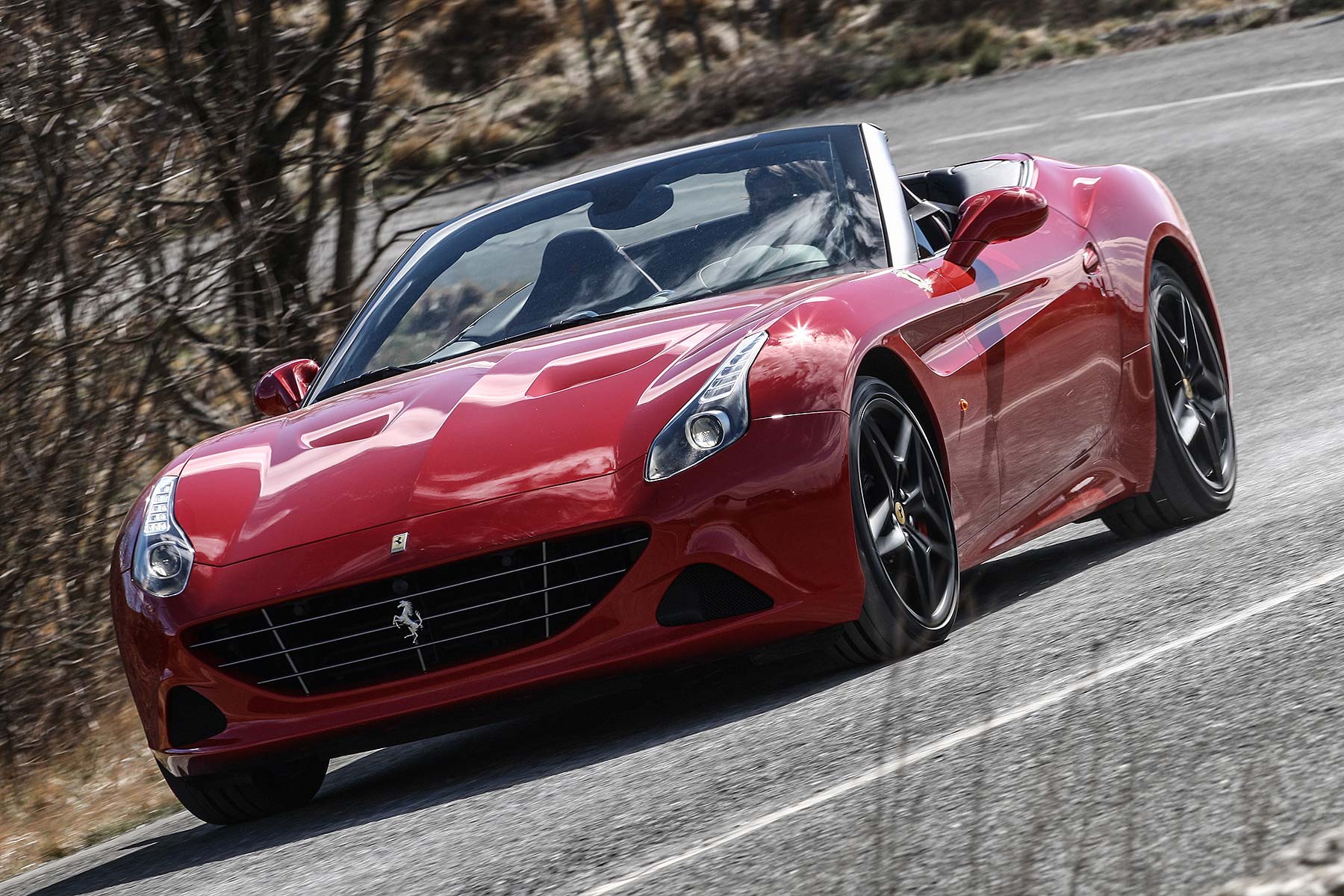
Ferrari divides its product range into two strands: sports cars (488 and F12) and GT cars (California T and GTC4 Lusso). As a member of the latter group, the California isn’t built for the race track. It’s designed for everyday usability – and crossing continents in comfort.
Despite that, driving one for the first time requires a few pointers. Twist the key in the ignition, hold your foot on the brake, then press the big red ‘Engine Start’ button on the steering wheel. Wumpfff – the engine erupts rudely into life. Now pull the right-hand paddle behind the steering wheel to engage first gear, release the foot-brake and you’re away…
Leaving the picturesque Tuscan town of Camogli, what’s immediately noticeable is how relaxed the California feels to drive. There’s lots of low-down torque from the big V8 and the seven-speed, dual-clutch gearbox defaults to automatic mode, leaving me to concentrate on squeezing between battered Fiat Pandas and the jagged cliff-face. The car may be relaxed – I am anything but…
The traffic thins as we climb a series of serpentine switchbacks, passing lush vineyards and yet more Pandas. Time to switch the Manettino dial on the steering wheel to Sport mode and shift gears myself. As the road opens into a long straight, I click the carbon fibre paddle back twice and bury the throttle. Ooooof. It may be a ‘softer’ Ferrari, but the California T still feels seriously quick. Supercar quick.
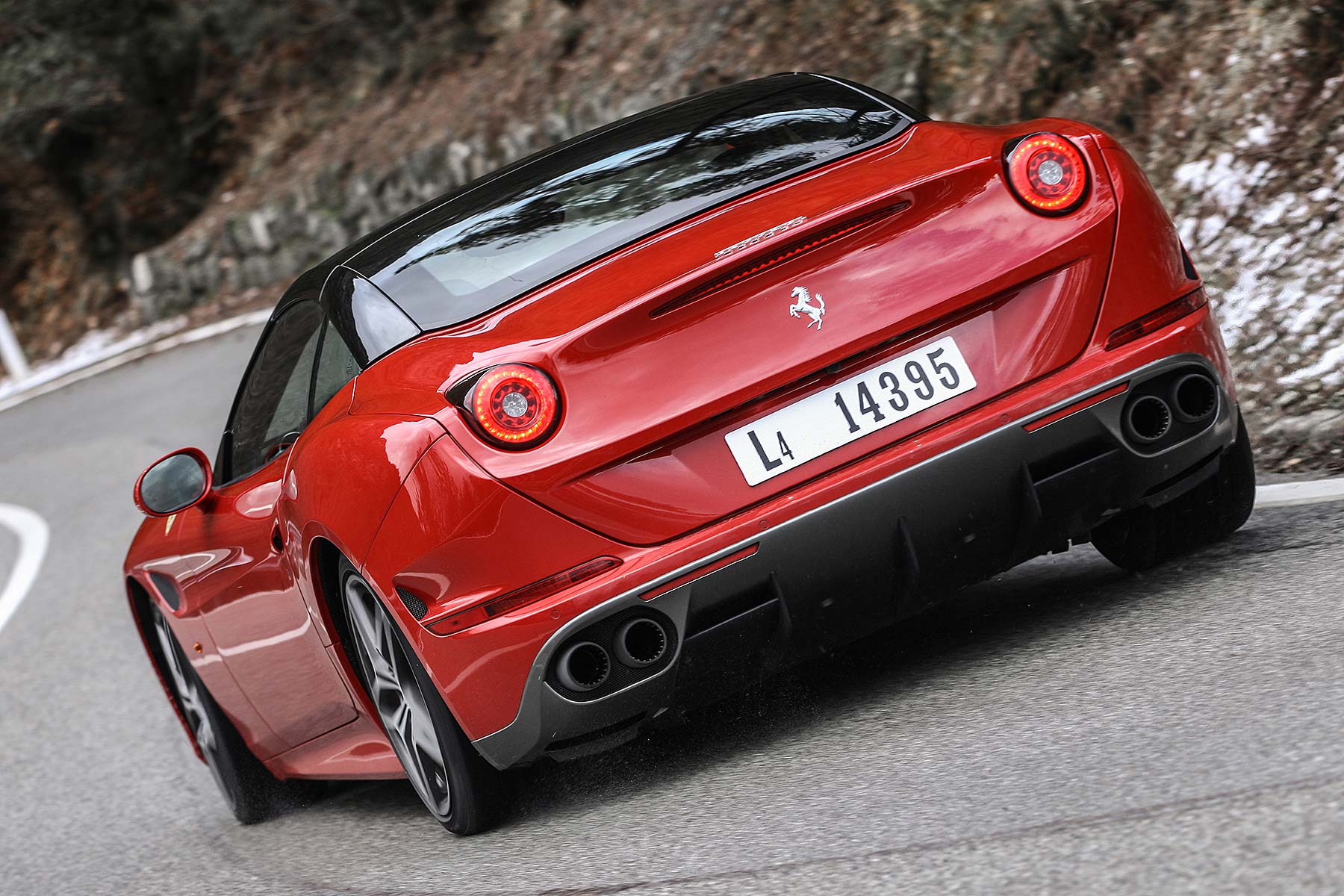
The steering is surprisingly light, but very direct, allowing you to dispatch most corners with little more than a wrist-flick. Gaining confidence, I push a bit harder, feeling the back end of the car come into play and the tyres begin to bite. It would take a braver man than me to unstick the Handling Speciale – especially on a dry road – but that hint of lairy, rear-wheel-drive attitude feels refreshing after several recent drives in 4WD sports cars.
Even a Ferrari can’t bend the laws of physics, though. And the California’s relative heft means that, ultimately, it doesn’t have the agilty of a McLaren 650S, or even a Porsche Cayman. But the pay-off is decent ride comfort, even in Sport mode, and effortless cruising ability. The car feels just at home on the autostrada as it does stringing together a set of hairpins.
If I have a complaint, it concerns the noise. Ferrari showed us no less than five graphs to demonstrate how the exhaust of the Handling Speciale is, well, louder. Unfortunately, while those turbos offer plenty of deep-chested roar, there isn’t the visceral, high-pitched wail of naturally-aspirated Ferraris such as the 458. With so many tunnels on our three-hour route to Lerici, that seemed a shame.
On the inside
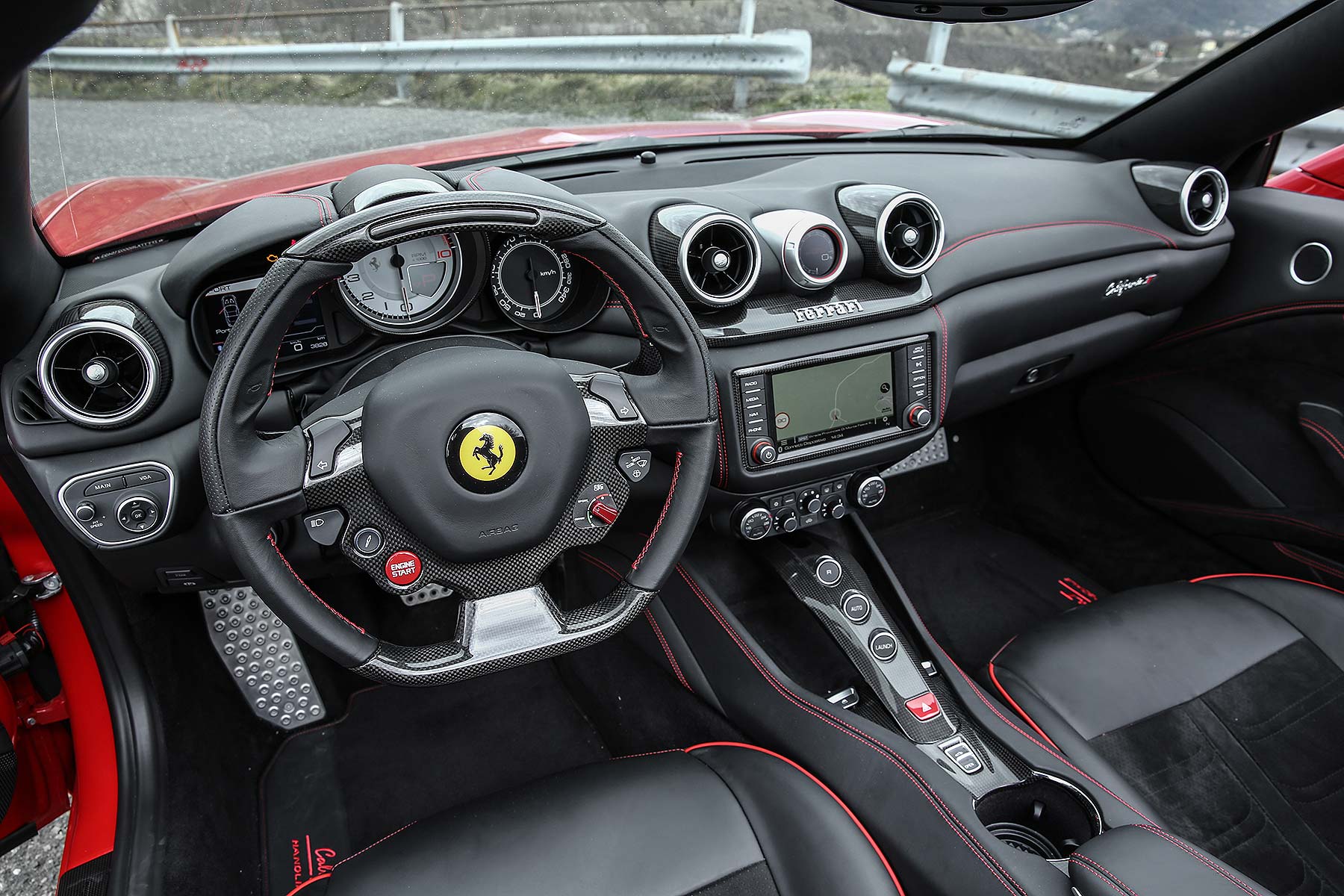
You can keep your hard-backed bucket seats and skimpy Alcantara trim – California customers prefer soft seats and luxurious leather. From where I’m sitting, looking out over a long red bonnet, it’s hard to argue with that.
Unlike some supercars, climbing aboard the California doesn’t require contorting your body into the yogic flying position. And once inside, you’ll find ample electric adjustment for the driving position, plus heated and ventilated front seats, dual-zone climate control and a touchscreen media system.
The dashboard is swathed in a mix of leather and carbon fibre, creating a slightly odd ambiance that’s halfway between racing car and luxury coupe. Quality is good, but still falls short of the best Audi and Mercedes-Benz can muster. At least there’s no Fiat switchgear on display, unlike in prancing horses of old. And Ferrari’s carbon fibre is the real thing – not the plastic stuff found in hot hatchbacks.
Practicality is important for a grand tourer, so the California offers plenty of stowage spaces around the cabin, plus a 340-litre boot. That’s big enough for two sets of golf clubs, but bear in mind that going topless (the car, not you) reduces luggage room by 100 litres.
That said, you may as well consider the tiny rear seats an extension of the boot. Ferrari calls the California a ‘2+2’, as opposed to a four-seater, but even with my vertically-challenged 5ft 7in frame in front, there was barely enough legroom behind for a small child. Being entombed, roof-up, in the back of a California is a claustrophobe’s worst nightmare.
Before we move on, a quick word about Apple CarPlay. The California was one of the first cars to feature the system, which is now standard across Ferrari’s range. If you have an iPhone or iPad, CarPlay’s icons and menu system will be instantly familiar – making it one of the most intuitive ‘infotainment’ systems available.
Running costs
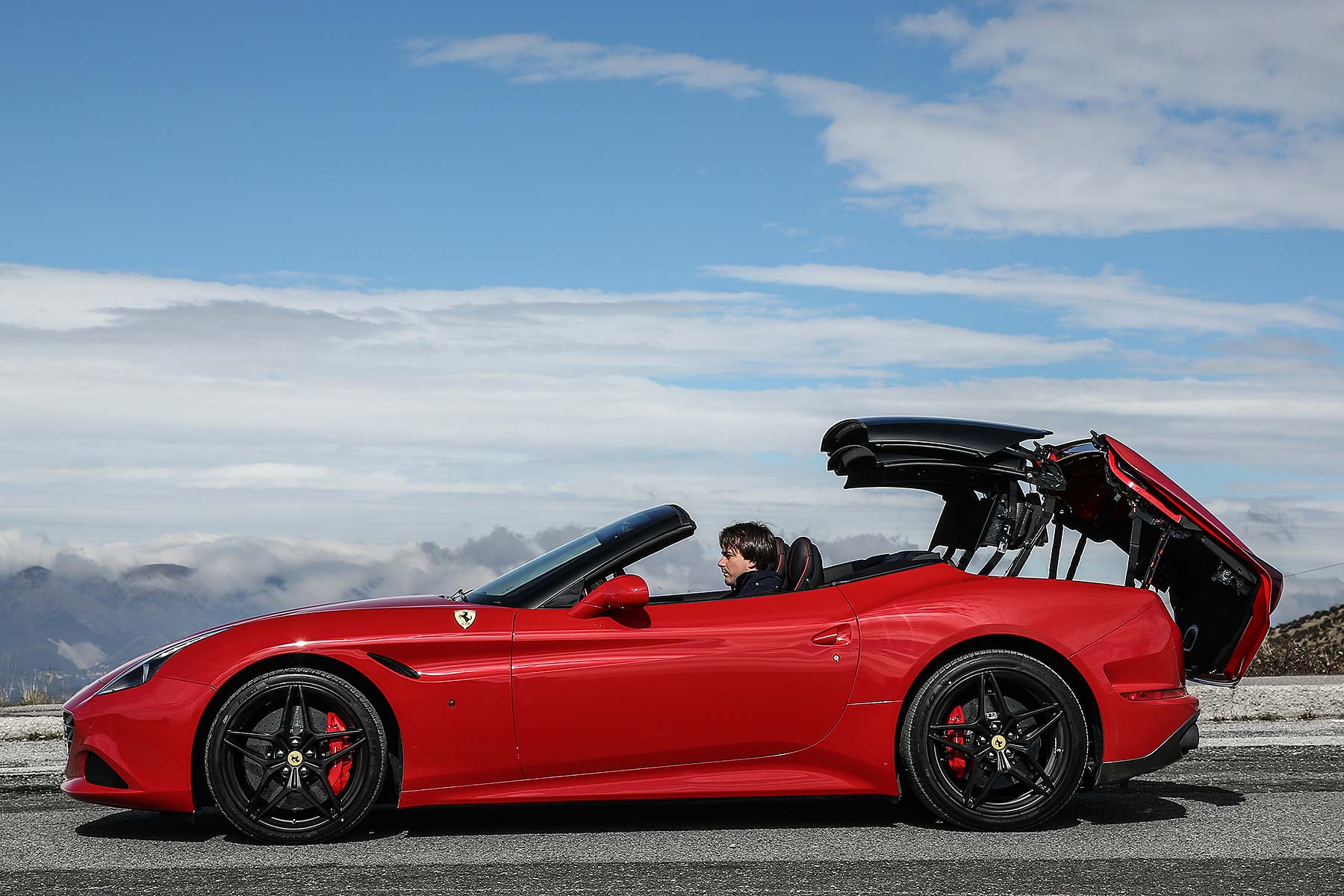
If you have to ask, you can’t afford it, right? It might have ‘Speciale’ in its name, but this isn’t one of those supercars that will start appreciating the second you leave the showroom. Unlike the 458 Speciale, for example, the HS isn’t a limited-edition that wealthy Tifosi will covet for their collections. Nor is it sufficiently different from a ‘normal’ California to command a big premium on the used market.
Still, nobody buys a Ferrari to save money, so savour the driving experience and be thankful for that turbocharged V8, which boosts fuel economy by 5.4mpg versus the naturally-aspirated engine in the original (2008-2014) California.
You want figures? Well, drive the California T in a manner that’s more Rodeo Drive than Route Napoleon and you might – just might – eke out the official 26.9mpg. Drive it as Ferraris are meant to driven and you’ll be lucky to see half that.
CO2 emissions are a Band L 250g/km, which means £870 car tax in the first year and £490 per year thereafter. And like all Ferraris, the California T comes with a four-year warranty and seven years’ free servicing (transferable to the next owner).
Verdict
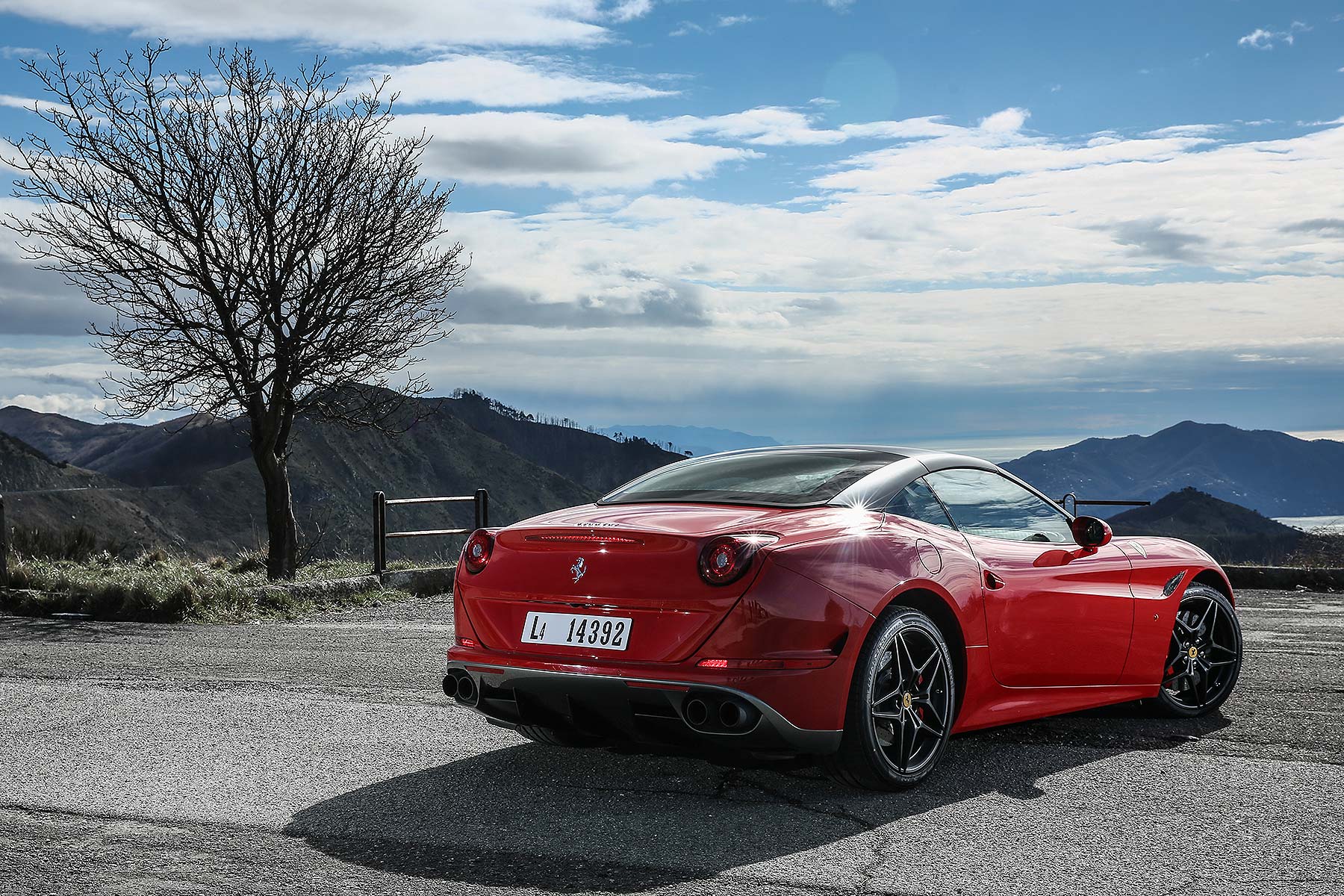
I’ll admit, I was a little concerned about losing my Ferrari virginity. After so many years of dreaming, not driving, would the reality of the Ferrari experience prove disappointing?
I needn’t have worried. Driving the California T Handling Speciale really was the stuff that schoolboy dreams are made of – especially in Italy, where your every move is acknowleged by gesticulating arms and enthusiastic thumbs-up gestures. I even had a friendly wave from a traffic policeman and a doff of the cap from an old gent outside a cafe.
This latest California is ferociously fast and fabulous fun. Yet it’s also comfortable and easy to drive. Ferrari purists may label it ‘soft’, but when you aren’t chasing the redline on deserted mountain roads (i.e. about 99% of the time), the California doesn’t make you suffer for its art.
Yes, even in this firmer, more focused Handling Speciale specification, the California remains very much a grand tourer – albeit one with the soul of a sports car. Considering that adaptive Magneride dampers (which around 60% of customers opt for) cost £3,168 as a standalone option, a further £2,400 for the HS pack looks like money well spent.
Would I buy one? No, not even if I found £155,000 down the back of the sofa. For me, the Porsche 911 Carrera S offers slightly sharper handling and comparable comfort for little more than half the price. It’s also less in-yer-face than than extrovert Ferrari (bystanders and policemen aren’t always so welcoming in the UK) and even has slightly more commodious rear seats.
Nonetheless, the California is seductive and super-desirable. It ticked a box on my bucket list with some style. Now, if you don’t mind, I’m off to swim with some dolphins…
Specifications: Ferrari California T Handling Speciale
Price: £155,230
Engine: 3.9-litre twin-turbo petrol
Gearbox: Seven-speed semi-automatic
Power: 560hp
Torque: 557lb ft
0-62mph: 3.6 seconds
Top speed: 196mph
Fuel economy: 26.9mpg
CO2 emissions: 250g/km



